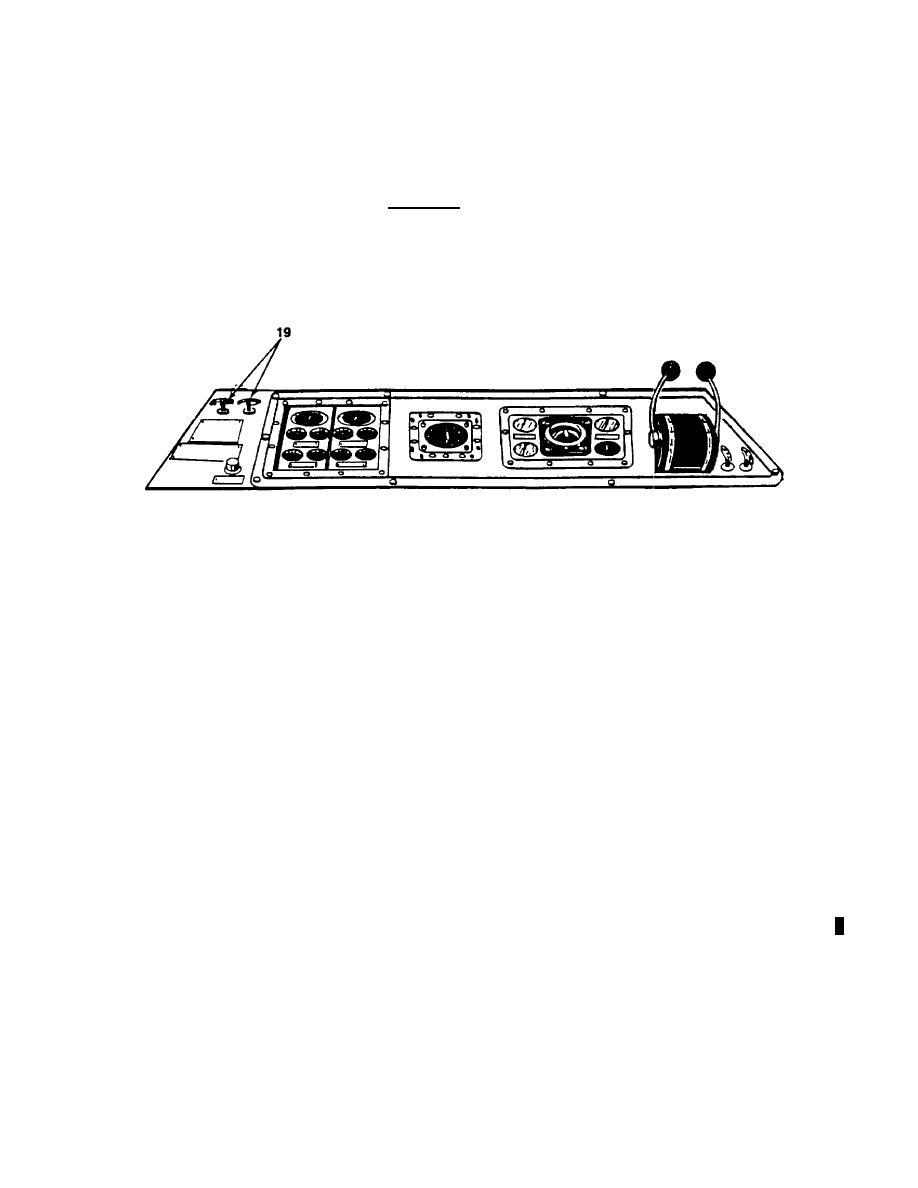
| Tweet |

Custom Search
|
|

|
||
 TM 55-1905-222-14
2-9.5 Emergency Engine Shutdown. The emergency engine shutdown control, when pulled, will trip the air
shut-down valve located between the air inlet housing and the blower to shut off the air supply to the engine.
Lack of air will prevent further combustion of the fuel and stop the engine. The emergency engine shutdown
control must be pushed back-in after the engine stops so the air shutdown valve can be opened for restarting
after the malfunction has been corrected. Use the procedure below to shut down the engines in an emergency.
CAUTION
Using an emergency engine air shutdown control to stop an
engine may cause damage to engine oil seals. The emergency
engine shutdown control should be used in engine room fire or
runaway engine emergencies only.
a.
Pull the applicable emergency engine shutdown control (19) (T-handle) on the control console, port
side, and hold it there until engine stops.
b.
Push in the emergency engine shutdown control after engine stops.
2-9.6 Inoperable Rudders. If the rudders become fouled or unusable, the LCM-8 can be steered by varying
engine speed as follows.
2-9.6.1 Steering By Engine Speed.
a.
To turn the LCM-8 to port while underway, decrease the port engine speed while maintaining the
starboard engine speed. The turning rate to port is predicated on the difference in speeds of the port
and starboard engines. Set the port engine throttle to the appropriate engine speed for the desired
turning rate When the turn is completed, increase the port engine speed to that of the starboard
engine.
Change 6
2-68
|
||
 |
||